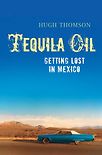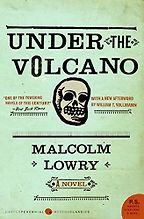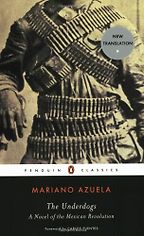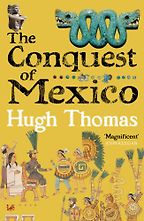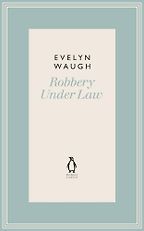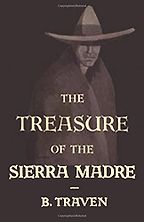Your first book is Malcolm Lowry’s Under the Volcano.
There was a syndrome in the 1920s and 30s of British writers writing about Mexico – Lawrence, Waugh, Huxley, Greene. But Malcolm Lowry was one of the few English writers who actually spent quite a lot of time in the country. Graham Greene was only there for five weeks or so before writing his novel, but Lowry got under the skin of Mexico in a way that few of his contemporaries did.
Why?
I think it was the lure of the exotic and the unknown, of a different value system. Lawrence, for instance, was very taken by the idea of the ‘savage gods’. Mexico provided all that and was relatively easy to get to from the States. Lowry was attracted by the fatalism of Mexico, exacerbated by the huge quantities of alcohol he consumed. His main character, who was heavily autobiographical, is the Consul, a glorious wreck of a man trying to stitch himself together. It is a day in his life, or, rather, death, under the shadow of a volcano in a small Mexican town. His wife of the time, Jan Gabrial, published her own memoirs 50 or so years later about their turbulent life together, and called her book Inside the Volcano. I like that.
Your next book is The Underdogs by Mariano Azuela.
I first read this when I was 16 or 17 and it made a strong impression on me. It’s a tough, picaresque novel of the Mexican revolution and of what it was like for the soldiers in the north. It’s a good account of how anarchic that revolution must have been and it still has a lot of verve and power, with images of troops spilling out of the trains, the Dorados, the ‘golden ones’, Pancho Villa’s cavalry. [Pancho Villa 1878-1923 was the colourful bandit-hero of the Mexican revolution].
This book is allied to Insurgent Mexico by the American journalist John Reed, his journalistic account of the Dorados of the north and the Mexican revolution. I find that people are often surprisingly ignorant about the Mexican revolution, given its importance. Lasting from 1910 to 1920, it gave Mexico its direction for much of the 20th century. It completely changed the country and was the first modern Latin-American revolution, with implications for the way the whole continent changed. Of course, it was anarchic and complicated, with many treacheries and reversals.
With Pancho Villa and his men, Azuela and Reed created an image of Mexican wildness that was to play down the line to countless Westerns and Sergio Leone movies – of amoral brutality and a wayward sentimentality; singing corridas and sharing your last tortilla, while laughing at how the brains of your enemy had splattered the ground.
Hugh Thomas, The Conquest of Mexico.
This came out just at the time that I was making a film in Mexico and following the Spanish conquistador Hernando Cortes’s route from Veracruz to Mexico City (as it is now – then it was Tenochtitlán, the Aztec capital). Cortes reached Tenochtitlán in 1519. I used this book as my bible for retracing his route. Thomas makes clear what an achievement it was, first to dismantle his boats when he arrived and then to advance into this huge and powerful empire, knowing that the Aztecs practised human sacrifice. I mean, whatever you think of the Spaniards and the Conquest, they were undeniably brave. Thomas is good at using Aztec sources, chronicles and stories to show how it seemed from their side.
Did you do the actual journey?
I very much did the journey. Of course, now you can follow the route in many different ways and if you go by road you can do it in a day. But Cortes was being led by Indian guides who for all sorts of reasons didn’t want him to get there, so if there was a volcano they would go over it rather than around it, so to speak. You can see how the Spaniards got disorientated and worried; the route they took is still very wild.
Now you’ve got Evelyn Waugh, Robbery Under Law: The Mexican Object-Lesson.
This is a good one. There was a big fashion in the 1930s for making the most of the trip by writing both a novel and a travel book about Mexico, as Greene and Lawrence did, but Waugh only wrote a travel book. It is little known and should be more widely read. It may be little known because of its awful title. The book has an odd genesis – it was a commission from the Pearson family who had oil holdings in Mexico that had been expropriated by the revolutionary government. They were so outraged that they paid Waugh to write a book about how arbitrary and unjust this was.
So, it’s an odd, sponsored book and while Waugh fulfils the brief, he also ranges far and wide across Mexico. He sees that its history is not as simple as ‘noble Indians and brutal Europeans’ and thinks Mexicans should celebrate their post-Columbian inheritance as much as their Aztec history. There is a fair amount of ‘dog eat dog’ in the Mexico Waugh describes – it was a tough place to live and work, and Waugh shows this with no sentimentality.
Lastly, B Traven’s The Treasure of the Sierra Madre.
This was turned into the film starring Humphrey Bogart. It’s about a group of miners who go to the Sierra Madre because they’ve got wind of a fabulous gold mine. Of course, they get torn apart by jealousy, rivalry and encounters with bandits. The prose is hard-boiled, almost as though Raymond Chandler had written it; a real tough-man book, as you can imagine given that Humphrey Bogart was in the film. It’s by this mysterious writer B Traven. Nobody really knows who he was, though there have been plenty of theories. He clearly knew about working conditions in Mexico and how tough and inhuman they were. There is a famous episode when the federales, the police, are challenged because they have no badges and one of them says: ‘We don’t need no stinking badges.’
Traven sets up this tough, amoral Mexico which presaged the Hollywood Westerns and plays to the fantasy that if you go south of the border, there are no more laws. It’s long been endlessly exciting for writers to fantasise about and there’s a kind of American myth that it’s more elemental and wilder across the border and men can find – or lose – themselves there. All the Pretty Horses is a more recent example of the genre.
I’m not sure it ever was as wild as writers like to imagine. I also don’t want to paint too dark a picture of it, because it’s a wonderful country full of surprises, although it runs by its own rules. I suspect Mexico is altogether more complicated than English and American writers have given it credit for. There are cosmopolitan areas like Mexico City and then the desert and the jungle in the far south. That’s why for my last book, Tequila Oil, I drove in from Texas and carried on right to Yucatan in the jungle.
I wanted to see the whole thing.
Five Books aims to keep its book recommendations and interviews up to date. If you are the interviewee and would like to update your choice of books (or even just what you say about them) please email us at [email protected]
Five Books interviews are expensive to produce. If you've enjoyed this interview, please support us by donating a small amount.

